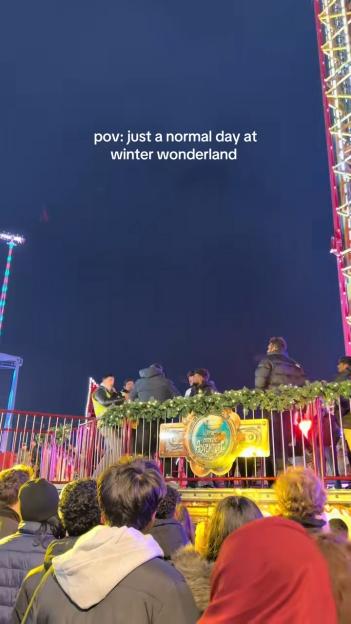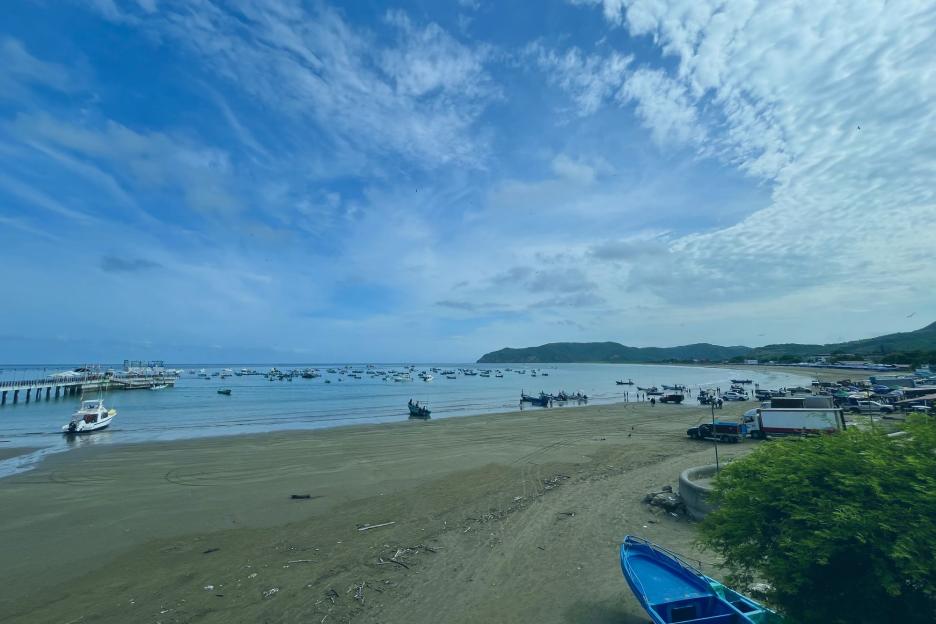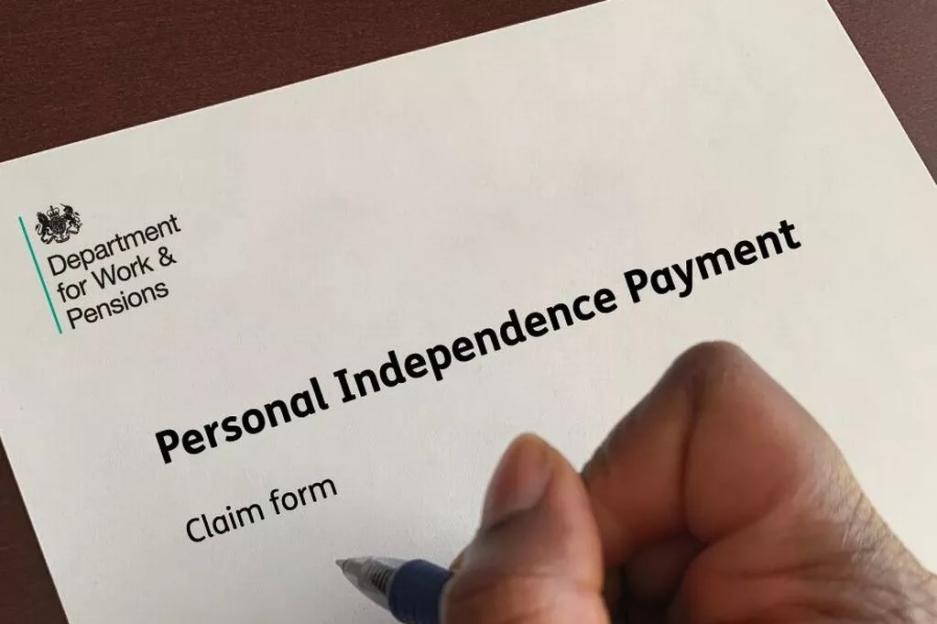WITH drugs flowing so easily on its notorious strip that lines of cocaine are offered free with drinks at bars, Tenerife’s dark criminal underbelly simmers close to the surface.
Now, The Sun can reveal how the Spanish party island is at the centre of an increasingly volatile turf war between British narcos , the Italian mafia and even biker gang the Hells Angels as they vie for control of its rampant narcotics trade.
 The holiday island of Tenerife is being blighted by the rise of organised crime
The holiday island of Tenerife is being blighted by the rise of organised crime
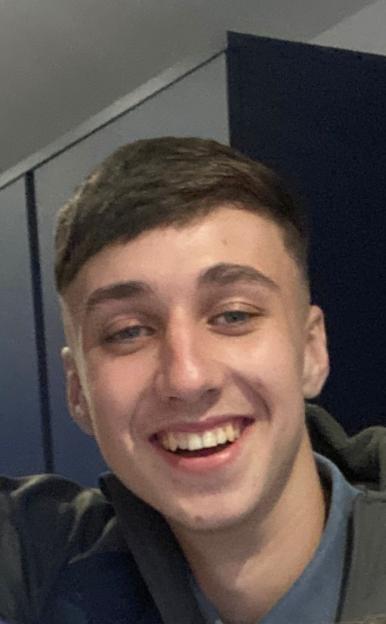 Brit teen Jay Slater died on the island a year ago
Brit teen Jay Slater died on the island a year ago
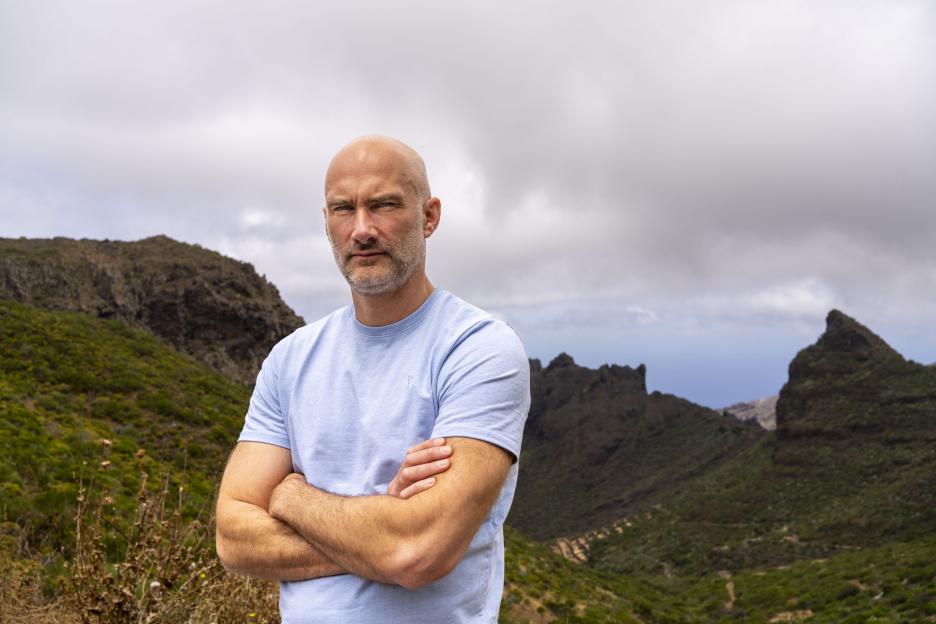 Sun journalist Graeme Culliford headed to Tenerife to investigate
Sun journalist Graeme Culliford headed to Tenerife to investigate
The sun-soaked Canary Island , beloved by young Brits who flock to its nightclubs every summer , has seen its party culture put under the microscope in recent times following the death of tragic teen Jay Slater .
Last month, our team saw first-hand how Class A drugs such as cocaine are still being freely traded at its festivals and resorts a year since the 19-year-old was found dead in a ravine.
And today, experts are warning that Tenerife has become a gateway for organised crime groups intent on flooding Europe with hard drugs, transforming the holiday hotspot into a dangerous den of thieves.
British gangs dominate the local supply routes – peddling cocaine, ketamine and marijuana to tourists – and violent clashes are becoming increasingly common as they battle for control.
It has sparked fears that innocent tourists could be at risk, with ruthless crooks also targeting them in large-scale scams leaving them thousands of pounds out of pocket.
Mafia expert Antonio Nicaso tells us: “Several organised crime groups operate in Tenerife. Amongst the most prominent are Italian mafia clans — especially from Camorra, Ndrangheta and the Casamonica Family.
“These groups originate from regions such as Campania, Calabria, and Rome and they are involved in large-scale money laundering, cyber fraud, and cocaine and hashish trafficking, often using Tenerife as a hub.
“British gangs, mainly from cities like Liverpool and Manchester , control much of the street-level distribution of drugs in tourist areas and have reportedly clashed with Italian groups over territory, which has led to turf wars and occasional violence .”
Tenerife, which lies just off the North African coast, is fast replacing the Costa del Sol as the primary destination for hardened criminals.
Its remote location – and pivotal position on the drug smuggling route between South America and mainland Spain – makes it the ideal place to hide out.
During The Sun’s visit earlier this summer , the influence of the burgeoning drugs underworld was clear to see.
One tout working at a bar on Playa Las Americas’ main drag, Veronica’s strip, was offering a free line of coke with the first drink.
Potentially fatal laughing gas balloons were openly on sale at the same bars, where 60-euro wraps of cocaine could be purchased from brazen staff.
Cops manning the single police car on patrol seemed blind to the blatant criminality and prostitutes loitered outside offering lewd sex acts.
Drug cocktails
It was in the midst of this permissive atmosphere that apprentice bricklayer Jay lost his life a year ago.
Last month, the inquest into his death heard he had taken a cocktail of drugs while partying in Playa Las Americas including ketamine, cocaine and MDMA.
Having agreed to spend the night at a remote AirBnB rented by a convicted drug dealer, he plunged to his death while lost in a mountain range as he tried to make his way back to his hotel.
Author Antonio, a mafia expert from Calabria, Italy, says it is no surprise Jay was able to buy so many drugs.
He said: “Cocaine is relatively easy to find in Tenerife due to a combination of geographic, economic, and criminal factors that make the island an attractive hub for drug trafficking and retail distribution.
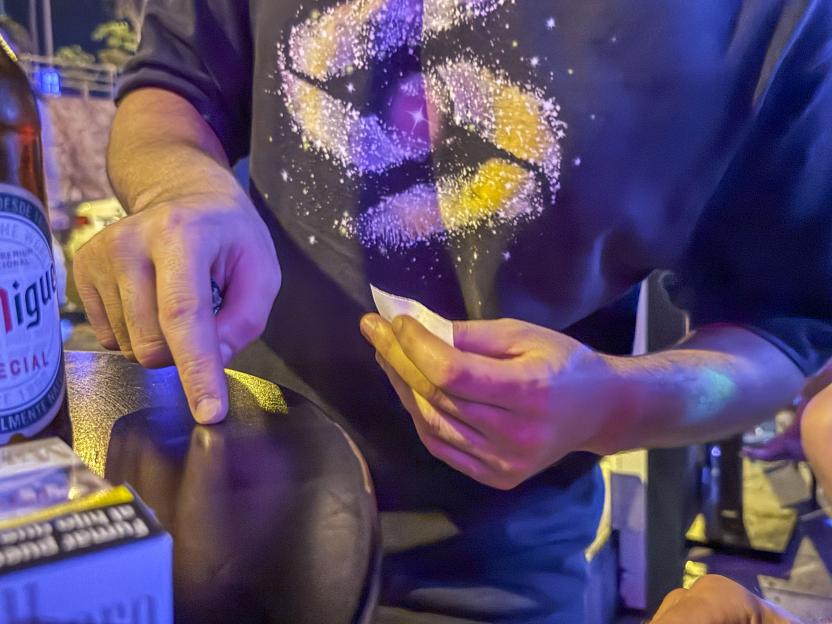 Drugs like cocaine can be purchased from bar staff in some places
Drugs like cocaine can be purchased from bar staff in some places
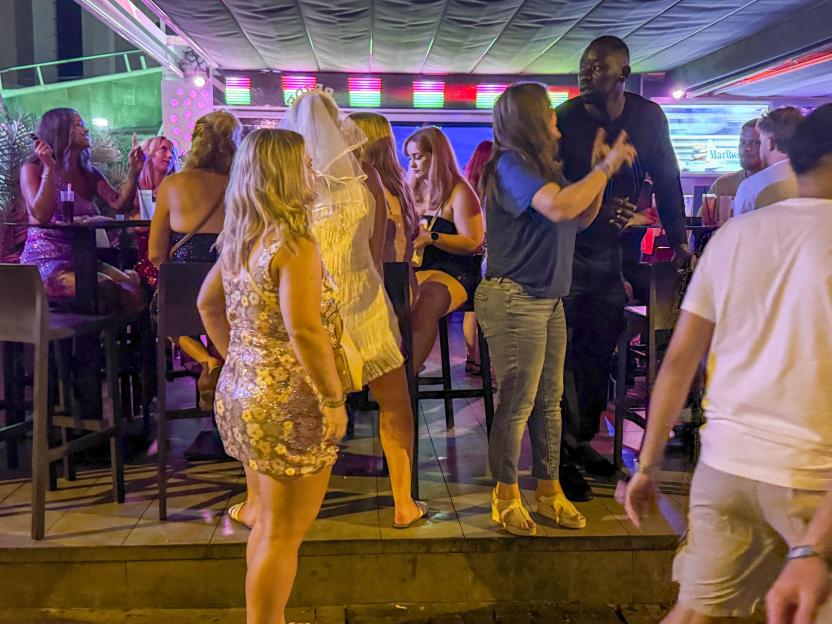 The island has long been a hit with young Brits who flock to its notorious strip
The island has long been a hit with young Brits who flock to its notorious strip
“Other factors include weak border controls, high tourist demand, and limited local enforcement capacity.
“Gang leaders and lower-level operatives, often called ‘soldiers’, are occasionally arrested in Tenerife, but not with sufficient frequency to significantly disrupt operations.”
Fugitives’ paradise
It’s the lack of judicial oversight that makes the island a favoured retreat for crime bigwigs desperate to avoid the law.
Liverpudlian crook John Clark escaped to Tenerife when the net started closing in on his multi-million pound money laundering and drug trafficking operation.
Detectives saw him hand over a bag containing £113,860 to an associate at Knutsford service station in Cheshire during an undercover operation in 2011.
When arrests do happen in Tenerife, they typically involve middlemen, enforcers, or money couriers, rather than top-level bosses
Antonio NicasoMafia expert
In May the following year they raided his £1.2million farm in Waterfoot, Lancs, and found £77,000 in cash stashed in two shoe boxes.
Crucially they also found a coded ledger that detailed drug shipments including one made in December 2012, when around 25kg of cocaine with a street value of £7million was transported from Holland to North Wales .
When Clark was charged with money laundering and his henchmen were arrested, he decided to make himself scarce.
Driving his Bentley, he took the Eurotunnel to France before travelling across continental Europe and going to ground in Tenerife. After a five-month manhunt he was finally arrested in Morocco in June 2013.
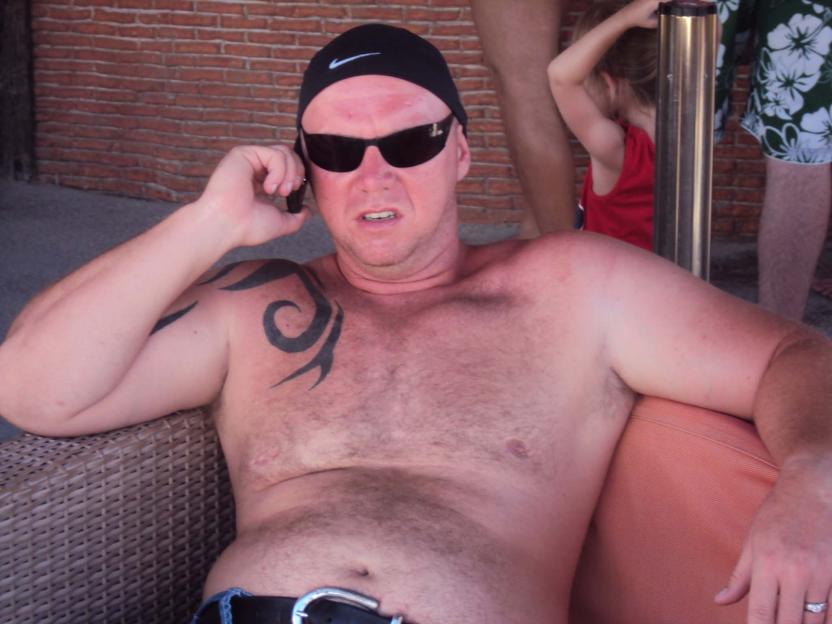 Drug dealer John Clark tried to find refuge in Tenerife
Drug dealer John Clark tried to find refuge in Tenerife
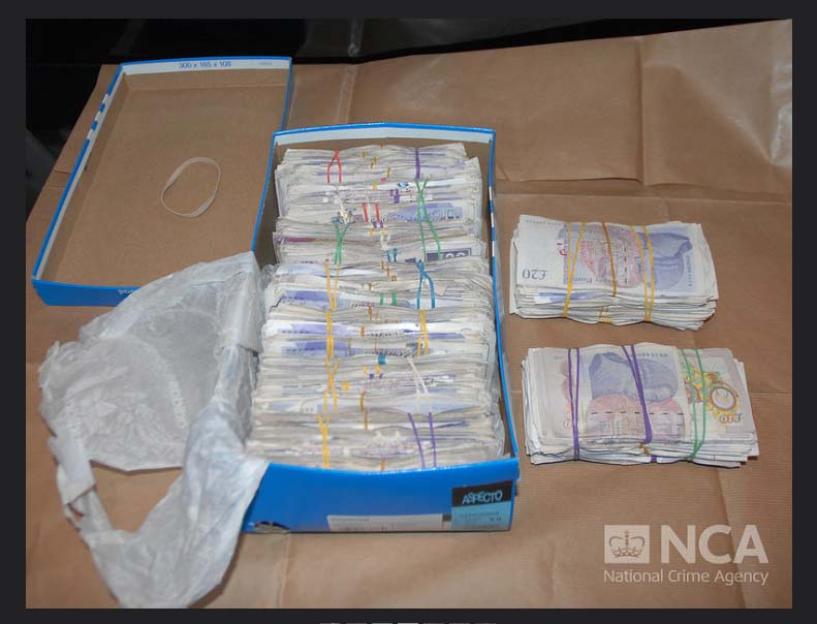 Hordes of cash found in a shoebox in Clark’s home
Hordes of cash found in a shoebox in Clark’s home
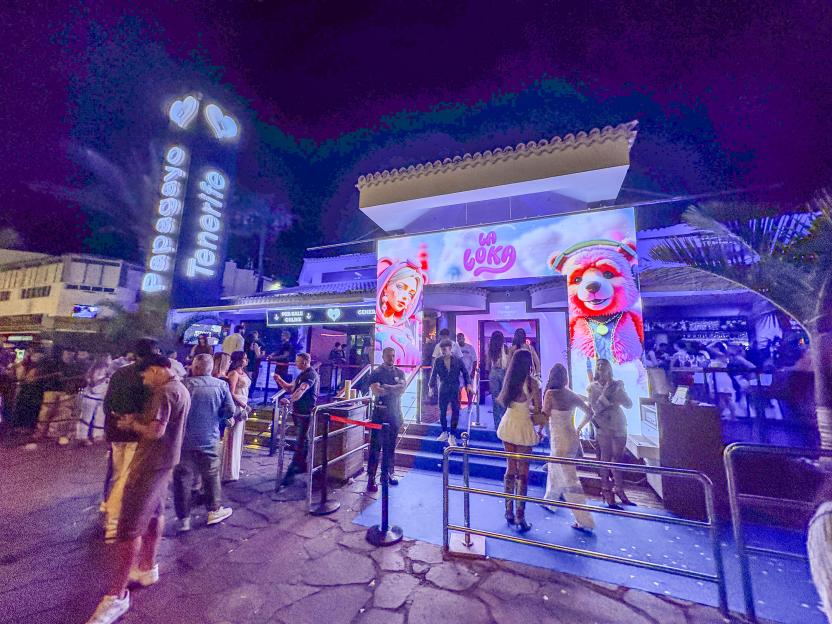 Elsewhere on the island tourists have fallen victim to scams
Elsewhere on the island tourists have fallen victim to scams
Scam central
The island’s dark underbelly was again exposed last year when police dismantled a criminal organisation suspected of defrauding more than 3,000 holidaymakers, most of them elderly.
The network ran over a dozen fronts made to look like legitimate stores in areas including Playa Las Americas and Los Cristianos.
Tourists shopping at the outlets thought they were snapping up bargains, but when they returned home they realised that huge sums had been swiped from their bank accounts without permission.
A total of €8.39million was taken before an international arrest warrant was issued for the gang leader and the operation was shut down.
Antonio says there is still a widespread view that crooks are able to operate with impunity in Tenerife, with a “recent development being the emergence of the biker gang, The Hells Angels”.
He added: “While Spanish authorities – including the Policía Nacional and Guardia Civil – have carried out notable large-scale operations, these interventions tend to occur intermittently.
“In general, high-ranking leaders tend to avoid direct exposure, often operating remotely or through trusted intermediaries who handle daily operations on the island.
“When arrests do happen in Tenerife, they typically involve middlemen, enforcers, or money couriers, rather than top-level bosses.”
He adds: “Rivalries over drug markets and turf have become increasingly dangerous elsewhere in Spain, such as the Costa del Sol, and Tenerife appears increasingly entangled in this pattern.
“One investigative report highlights the criminal organisation linked to the Skaljari clan, a Montenegrin group known for its violent reputation during trafficking operations in the Canary Islands . Other criminal organizations have been involved in kidnappings and murders.”
For the thousands of Brits who enjoy Tenerife’s beaches every year, it is yet another terrifying development on an island becoming infamous for far more than its wild nights out and cheap two-for-one cocktail deals.





